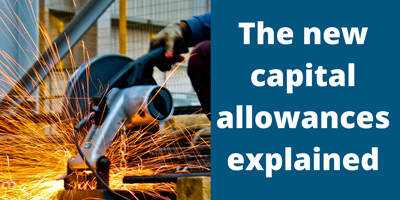
Michael Williams, of Knill James Tax Department, explains how the new 130% super-deduction will work, and what companies need to know to take advantage of the new capital allowances.
The Budget in March this year announced two new forms of capital allowances – the super-deduction, and a separate new first year allowance for 'special rate' assets. These new allowances only apply to companies within the charge to Corporation Tax, and so sole traders and partnerships will not be eligible for them.
What expenditure qualifies?
The new allowances apply to expenditure incurred on plant and machinery between 1 April 2021 and 31 March 2023. There are some anti-avoidance provisions to be aware of which apply to expenditure incurred under a contract entered into prior to Budget Day on 3 March 2021, and these may affect entitlement to the new allowances for that expenditure.
How will the super-deduction allowance work?
The super-deduction provides for an allowance of 130% of qualifying expenditure, and the first year allowance for special rate assets is at a rate of 50% of the expenditure. The remaining 50% unrelieved expenditure for those special rate assets will be included in the special rate pool and be eligible for the usual Writing Down Allowances at 6% per annum.
For every £100 spent on expenditure that qualifies for the super-deduction, there will be a Corporation Tax saving of £24.70, an effective rate of almost 25%. This is – perhaps not coincidentally – the same as the rate by which the main Corporation Tax rate is increasing from 1 April 2023.
Exceptions to the new allowances
There are a couple of important exceptions to the new allowances: cars are not eligible, and the expenditure must be on items that are new and unused.
Timings of asset disposals
There are also complications with regard to disposals of assets where these allowances have been claimed. The disposal proceeds will create an immediate balancing charge and so will effectively be brought into tax in full in the year of disposal. The usual rules for proceeds of disposal allow for the proceeds to be deducted from the existing capital allowances pool balance, and there is only a balancing charge where the proceeds exceed this, which will accelerate the taxing of proceeds.
Where the disposal takes place in an accounting period that commences prior to 1 April 2023, there is also provision in the super-deduction legislation for the proceeds to be increased by up to 30%, effectively clawing back the relief.
Importance of record-keeping for disposals
It will therefore be important to ensure that record-keeping in relation to the claiming of these allowances is thorough and well maintained to ensure that these issues are identified upon disposal of the assets and proceeds are brought into the tax computation correctly.
How is the Annual Investment Allowance affected by the new allowances?
The existing Annual Investment Allowance will continue at its current total of £1m per annum up until 31 December 2021. The AIA allows for a 100% write-off in the year of acquisition on most qualifying assets, both main rate and special rate.
The AIA should therefore continue to be allocated against special rate assets first and in priority to claiming the special rate FYA. This will allow for full relief on the cost in the acquisition period as opposed to just 50% followed by 6% per annum, which will accelerate the tax relief greatly.
Any questions?
If you have any questions about the new allowances or need any advice or assistance, please contact Michael Williams on 01273 484934 or michaelw@knilljames.co.uk.